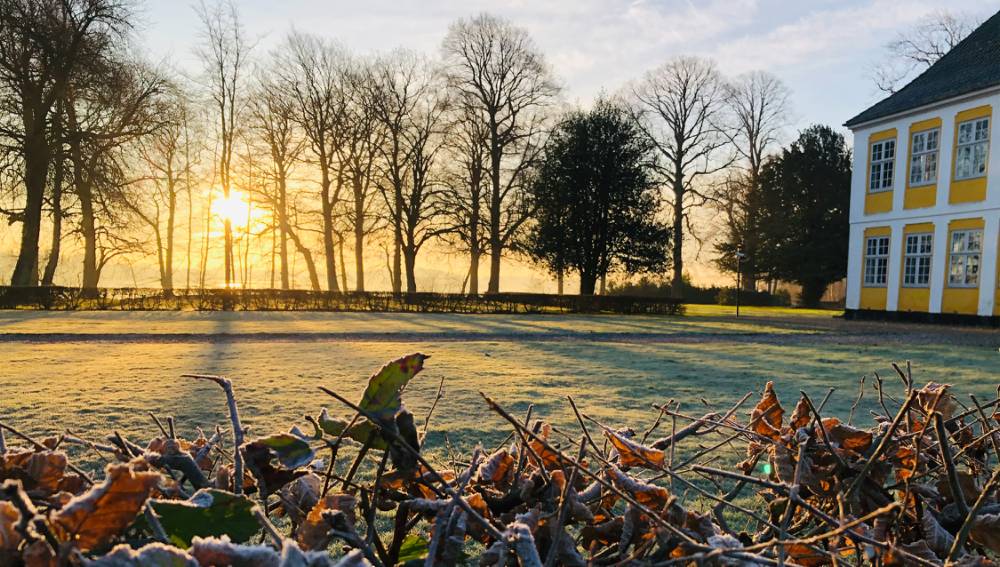
THE SURROUNDINGS
Enjoy the beautiful location
Sandbjerg Estate is beautifully located in the landscape - by the beech wood and Als Sound. The horizon is far in the distance here when you look out over the sound to Als, and high to the sky when you walk in the woods of the estate. There are many great hiking routes and hiking destinations in the immediate vicinity of the estate.


The Mill House (Møllehuset) and The Mill Dam (Mølledammen)
Where Møllesøen lake is today, there was originally a cove in from Als Sound. In the 1570s, a dam was built across the cove and a watermill was built out to the sound. Over time, the lake has become significantly smaller than it is today. The area of The Mill Dam has had a rich wildlife with geese, turkeys, chickens and ducks, and carp have probably been farmed in the lake. The lake has also been a resource for roofing the estate’s buildings, and well into the 20th century, the estate’s thatched buildings were covered with reeds from the lake.
East of The Mill Dam is The Mill House, where a watermill used to be in operation. You can get to The Mill House by following Sandbjergvej south. Today, The Mill House is owned by Aarhus University’s Research Foundation, which gives Aarhus University researchers the opportunity to stay at the house for research. The house gives researchers the opportunity to work with topics related to the local area or to have peace to work to carry out scientific work.
Mill Farmhouse (Møllegård) was also built as part of The Mill Dam, as well as a windmill south of The Mill House. The windmill burned down in 1905 and is no longer there. The original Mill Farmhouse burned down in 1908, and the residential house was built as an extension of The Mill House.


Beech woods and lushness
The woods belonging to Sandbjerg consist of the small wood Lilleskoven (8 ha.) and the large wood Storskoven (49 ha.). Lilleskoven wood is located along Sandbjergvej immediately northwest of Sandbjerg, and further north is Storskoven wood that extends all the way to Als Sound. The woods are beautiful beech woods with a few ash, sycamore and alder. Anemone grow on the woodland floor, and in places there are also yellow anemone, woodruff and dog’s mercury. The woods are beautiful in all seasons, but spring with the spring flowers on the woodland floor and later when the beech flower is a wonderful season for a visit.
Part of Lilleskoven wood out to The Mill Dam is laid out as untouched wood. Over time, this will provide a more varied wood with unparalleled and locality-adapted, native tree species and with greater natural content.
Troldhøj mound
Troldhøj is located by Sandbjergvej, a little northwest of Lilleskoven wood, and it is overgrown with a group of old oak trees. According to the legend, there lived a little wizard called Nis Puk here, who sunbathed on the mound at noon. Children were afraid of the hill, but Nis Puk reportedly did no harm to good people. The same mound is supposed to have served as a gallows hill in ancient times.
Why is it called Sandbjerg?
The name ‘Sandbjerg’ is not easy to explain, but it is probably explained geologically by some rare hills with sand deposits in the landscape. The hills have historically been larger - partly because they have greater visibility because the water level in Møllesøen lake has been lower, and partly because they have probably been larger because you can imagine that sand has been removed for mortar and construction purposes in the meantime. Sandbjerg lies on thick moraine clays in a flat and lush landscape sloping out to Als Sound.



